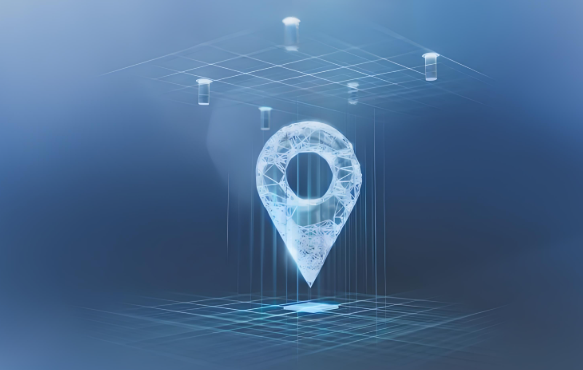In today's era of rapid development of digitalization and intelligence, the demand for accurate positioning has become increasingly prominent in many fields. Whether it is the real-time tracking of goods in logistics warehousing, the rapid positioning of medical equipment in medical places, or the effective management of tools and personnel in industrial production, efficient and reliable positioning technology is indispensable. As an advanced positioning solution, the real-time positioning system (RTLS) is gradually implementing various complex positioning needs with its unique technical advantages.

RTLS technical principle: the cornerstone of accurate positioning
The core of RTLS positioning lies in its diverse technical means. Common positioning technologies include radio frequency identification (RFID)-based positioning technology. When objects with built-in tags are close to the scanner, they can be accurately located and relevant event information can be sent to the server. For example, in hospitals, medical staff can quickly find the required medical equipment through this technology, which greatly saves searching time and improves work efficiency.
The Bluetooth RSSI (received signal strength indicator) real-time positioning system is also an important part of RTLS. The Bluetooth beacon deployed in the monitoring area can receive the signal emitted by the Bluetooth tag to determine the location of the tagged object or person, providing "room-level" positioning accuracy. In large shopping malls, customers can interact with Bluetooth beacons in the mall through their mobile phones to obtain accurate indoor navigation information and easily find the store they want to go to.
Similar to Bluetooth RSSI, Wi-Fi real-time positioning system can be used to detect nearby Wi-Fi RTLS tags to provide "room-level" positioning accuracy. With the time of flight method (ToF), more accurate mobile asset tracking and positioning can also be achieved. In logistics warehouses, by carrying sensors with RTLS tags on goods, combined with Wi-Fi real-time positioning system, the location and status of goods can be monitored in real time to optimize the warehousing process.
Ultra-wideband (UWB) technology and high-precision indoor positioning technology based on Bluetooth direction finding (AOD) can provide sub-meter positioning accuracy. In some industrial production scenarios with extremely high positioning accuracy requirements, such as precision instrument manufacturing workshops, these technologies can ensure accurate positioning of production equipment and personnel, and ensure safe and efficient production.
Implementation of RTLS positioning requirements in different scenarios
Logistics and supply chain management
In the field of logistics and supply chain, RTLS plays a vital role. From the transportation of goods to warehouse management, every link is inseparable from accurate positioning. By tracking the location of items throughout the process and adding timestamps to them, waste can be prevented, human errors can be reduced, and countless insights can be provided for improving each stage of the journey. For example, during transportation, using RTLS to monitor the vehicles transporting goods in real time can not only understand the location of the vehicles, but also grasp the transportation status of the goods, ensuring that the goods arrive at the destination on time and safely. In warehouse management, RTLS can help achieve intelligent inventory management, optimize the storage and delivery of goods by locating goods in real time, and improve the utilization of storage space.
Healthcare field
There are a large number of medical equipment and important assets in hospitals. Medical staff spend a lot of time looking for these equipment, adding additional pressure to the already tight medical resources. The emergence of RTLS has changed this situation. By equipping medical equipment with RTLS tags, medical staff can quickly locate beds and medical equipment and improve work efficiency. At the same time, RTLS can also be used to track perishable and high-value items such as vaccines and organ transplants to ensure their safety and effectiveness during transportation and use. In addition, RTLS can improve processes by visualizing the location of surgeons, and improve hospital management efficiency and resource utilization.
Industrial production and equipment management
In industrial production, RTLS can help companies achieve accurate positioning of production equipment and tools. In manufacturing, knowing the current location of raw materials is a big problem. Raw materials are scattered throughout the factory. Tracking these materials can help optimize physical space, eliminate wasteful searches, actively distinguish similar materials, reduce waste and damage, and significantly speed up assembly and manufacturing processes when materials are actually needed. For frequently displaced items such as tools, RTLS can track their location in real time, enhance responsibility, reduce unnecessary paperwork in the process, and maximize the working time of people trained to use these tools. In addition, RTLS can also be used for work-in-progress (WIP) tracking, generating key insights about product manufacturing progress through location data, protecting time-sensitive materials, identifying blocking points and bottlenecks, and making manufacturing more flexible at every stage.
Personnel safety and management
RTLS also has important applications in personnel safety and management. In dangerous environments such as industrial production workshops and construction sites, the precise location data of on-site workers can issue warnings when someone enters a dangerous space to protect the lives of personnel. In an emergency, RTLS can speed up personnel counting and mustering protocols, mark the virtual boundaries of temporary projects, show if someone has stayed too long on a task that could become dangerous over time, and accurately show how to find a suitable person. In large event venues such as stadiums and concerts, RTLS can help managers grasp the location and distribution of personnel in real time to prevent crowding and stampedes, and can also help parents quickly find lost children.
RTLS has successfully implemented positioning needs in many fields with its diverse technical means and wide range of application scenarios. With the continuous development of wireless communication technology, sensor recognition technology, big data interconnection technology, Internet of Things and other technologies, RTLS's accuracy, coverage, capacity, latency and other indicators will be further optimized.